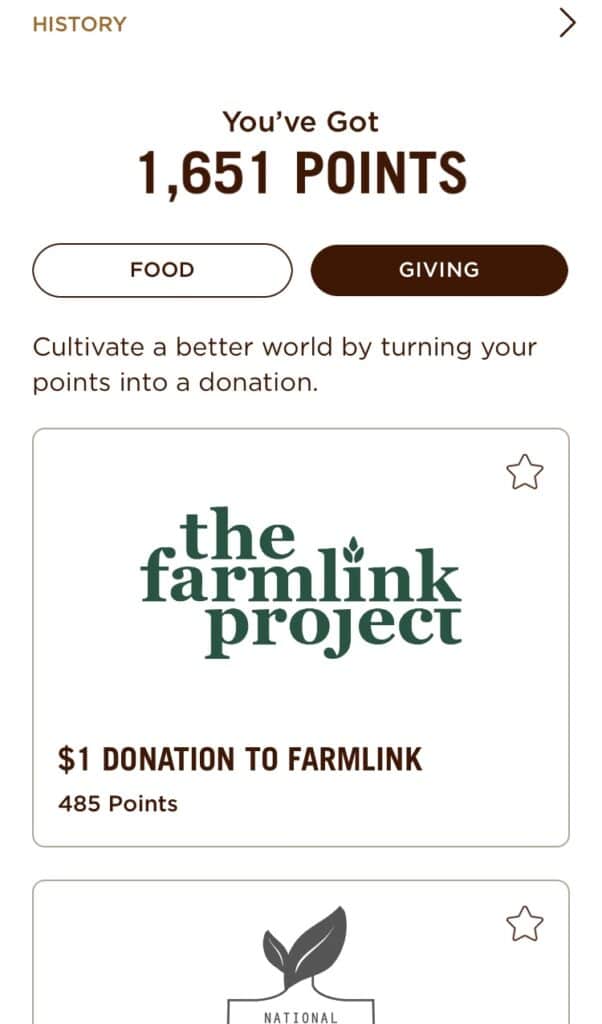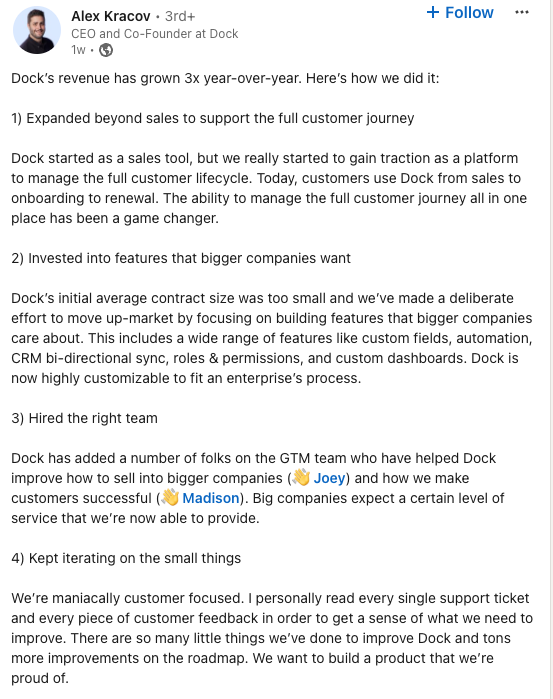23 Examples of Brands Being Real, Done Well
Learn How to Make Your Association’s Brand Voice More Authentic

There are so many organizations competing for your audience’s attention. If you want to win their attention, time, and buy-in, and stand out in their inboxes, texts, and social media, you need to develop a memorable, authentic brand voice. For associations who want to attract young professionals and the next generation of members, this is even more important.
Authenticity is extremely important to Gen Z: they prioritize genuine connections and transparency over polished, traditional marketing. Growing up in a digital age filled with curated content and advertising, Gen Z tends to be skeptical of anything that feels inauthentic or overly staged. They gravitate toward brands, influencers, and organizations that align with their values, demonstrate social responsibility, and communicate honestly. Authenticity builds trust, which is key to engaging and retaining this generation as loyal customers or followers.
How Do You Create an Authentic Brand Voice?
But how do you cultivate a distinctive brand voice that feels authentic, personal, and human? In the examples of authentic brands below, you’ll learn from examples of how some companies do this! Some showcase their employees or members; others develop a fun messaging style or tone. And still more do this by getting involved in causes that matter to their industry and their members.
Although the brands on the list below include more than just associations, you can learn something from each of their unique approaches to developing a human and relatable brand voice. We grouped the 23 examples of authentic brands into these categories, which double as tips you can use to make your brand stand out:
- Have a mission or a cause and make it known
- Use real people in your marketing and communications
- Show personality in your messaging and brand
- Talk about your customers’ problems (even if they’re awkward)
- Use special personal touches
- Listen to your customers
Have a mission or a cause and make it known
This one should be easy for associations! As a mission-based organization, promoting your cause should be a part of everything your brand does and says. You’ll see how the brands below make sure to infuse their mission, vision, and values throughout their message and actions.
1. Patagonia
If you have time, browsing Patagonia’s entire company history page is an interesting read, as well as an excellent case study of how to be cause-based. We’ll note a few things they do in particular:
- They distribute all profit that isn’t reinvested into protecting the planet.
- They launched a venture capital fund to help startups that focus on environmental and social returns just as much as financial returns.
- They created a grassroots network to help customers get involved in environmental action.

They don’t limit the message to the company history page, though. Their website is a mixture of shopping, activism calls-to-action, and articles about their cause.
2. Rotary
Rotary’s causes are front and center to their brand. As soon as you visit their homepage, you know their goal is to bring people together to act. Their various causes, like polio prevention and promoting peace, are visible across their digital channels.

Additionally, you can quickly discover that they’ve pursued these causes for years, showing that this dedication to a cause is more than a marketing campaign.
3. Chipotle
Chipotle has a cause and values that they put all over their marketing—on the paper bags, on their Instagram, in their emails, and on their website. They emphasize that they use “real food” and list out all of their 53 pronounceable ingredients on the side of the takeout bag. In addition, they incorporate giving back into their rewards program. Instead of just giving you the option to redeem points for food, they also allow you to donate your points to nonprofits.

Bonus, their social media presence is a master class at posting content that’s designed for the specific channel and getting into the trends that their target audience will resonate with.
4. Dove
You likely know bath and body company Dove’s causes already, because they’ve done such a good job over the years of promoting their themes as heavily as their products. In this marketing email from Dove, you’ll see they don’t even mention a product—it’s focused solely on uplifting women and girls. They know that every email doesn’t have to be a pitch. Instead, it can simply work to humanize their brand.

5. Goodmylk
While you’ll find loads of dairy-free milks on the market, few are bringing authenticity to the industry like Goodmylk does. Their cause is the first thing you see on their homepage: “Save the planet. Drink Goodmylk.” When you dig in to learn more, you see that their cause is infused into their product. Baristas can use Goodmylk’s powdered milk from a bag, which equals 32 cartons of other plant-based milks, and keeps that waste out of landfills.
In messaging to show off their “uncompromising quality” and real-food ingredients, Goodmylk says their product is “mylk like your mom would make.” This kind of messaging connects with people and makes them want to pull out some freshly-made cookies to sip alongside their product. Goodmylk uses this nostalgia to tell buyers they “get” them.
6. TeePublic
TeePublic, the world’s largest marketplace for independent creators, focuses on helping people turn their passion into profit. They work to differentiate themselves from other t-shirt companies by emphasizing how they elevate the artist, paying them well with each purchase made.
TeePublic goes a step further when it comes to their environmental impact by using the following practices to reduce their carbon footprint:
- Sustainable and toxin-free printing partners.
- Water-based, vegan-friendly, 100% biodegradable inks.
- Ethical manufacturing that’s certified WRAP and focused on improved labor standards.
7. dōTERRA
Essential oil company dōTERRA puts their values on display by explaining why their sourcing is so essential to their mission, even providing a map so you can peruse where products are coming from.

On their sourcing page, you can read that they’re “committed to making a positive difference in the lives of their farmers, harvesters, and distillers.” They go on to describe their Co-Impact Sourcing standards that promote:
- Environmental stewardship.
- Long-term, mutually beneficial supplier relationships.
- Sustainable jobs.
- Reliable income with on-time payments.
- Ethical treatment.
Reinforcing these values and practicing them helps show consumers that they have a warm, winning soul.
8. Culver’s
Culver’s is a fast-food chain hoping to connect with customers on more than their burgers and custard. Land on their About Us page, and you’ll find all the policies their team should practice, such as:
- Genuinely caring about customers and the quality of the products they produce.
- Practicing hometown hospitality.
- Encouraging team members and customers to find something good in every moment.
- Promoting an environment of kindness and doing the right thing.

They put money behind the values they stand for by creating the Thank You Farmers Project, which helps support local farmers and food banks. To date, they’ve helped raise over $5 million with this initiative.
Use real people in your marketing and communications
When we say “real people,” it’s not like stock photos aren’t of real people, but they can be used by any organization and don’t have a connection to yours. A relatively easy way to stand out is to use pictures of your own customers, employees, or members in your marketing and in other communications. Beyond that, you can feature these people in special ways, like one of our customers, NRPA, does!
9. National Recreation and Park Association (NRPA)
In this LinkedIn post from the NRPA, the leading not-for-profit organization dedicated to building strong, vibrant and resilient communities through the power of parks and recreation, they spotlight one of their enthusiastic nature lovers who is also an advocate for making kayaking more inclusive. This real, human story not only promotes a good cause, it also shows the face of a real person who is involved in one of the NRPA’s initiatives. It’s uniquely appealing to the audience that the NRPA is trying to reach. How can you use real member stories to bring authenticity to your brand?
10. charity: water
charity: water is a non-profit organization founded in 2006 that provides drinking water to people in developing nations. In this fundraising email, they promoted a real story of a donor, both via video and telling a short story about her contribution and inviting others to do the same. The twist: Nora is a six-year-old girl. They used a personal story to make a human connection with their audience and stand out from the crowd.

11. Association of Corporate Counsel
The Association of Corporate Counsel (ACC), another Higher Logic customer, is a global bar association promoting the common professional and business interests of in-house counsel. They created a series of “day in the life” features and social media posts to highlight some of their in-house counsel members, including this one.

The benefit of this kind of content is that you’re putting a face to other members of the association, and borrowing a bit of that value to associate your brand with someone they relate to.
12. Modcloth
Women’s clothing line ModCloth should win an authenticity award. Not only have they mastered the art of inclusive advertising by regularly featuring customer-submitted photos so shoppers can see what their clothes look like on real bodies – they also hire models in all shapes and sizes, and with disabilities, to pose their pieces on their website.
Featuring real images from customers in your clothing helps potential customers identify themselves with you, imagining how they might look in a piece.

13. ASAE
ASAE (also a Higher Logic customer), the organization for association management, representing both organizations and individual association professionals, also features real people in their brand communications. In this example, it’s not a member or a customer—it’s a team spotlight featuring their own Vice President of Public Policy. While you don’t want to solely focus on your own employees (mix in some customers too), putting some spotlight on them helps you get to know the organization as a group of people, rather than just as an organization.

Show personality in your messaging and brand
Another very common way to add authenticity to your brand is to create a personality for your brand. The examples below show organizations who have developed distinct personalities and maintained them across their communications. It’s not surprising why brands do this: it helps people remember and recognize your brand at a glance.
14. Funraise
Funraise, a popular non-profit fundraising tool, is bursting with so much personality, it’s literally in their logo (which replaces the “u” in their name with a smiley face). But it’s not just their logo that stands out in the authenticity factor. They even have an entire “musical” they produced to explain their product, which isn’t something you see often on a software company’s About Us page.
15. Liquid Death Mountain Water
Liquid Death Mountain Water (LDMW) proves you don’t have to be all rainbows, butterflies, and unicorns to have a brand soul.
As you’ll see in their messaging on their website site, LDMW uses phrases like, “Murder your thirst,” “Crack open a water,” “Summon Us,” and “Hell Yes” to convey their brand’s soul without compromising their personality.
They also use metal show terms like “Merch Store,” which aligns to the rock band theme with most of their brand. Not only does this personality show itself across their marketing, it also helps them relate to a specific audience they’re trying to reach.
16. Morning Brew
Morning Brew is an email newsletter promising to make you smarter in just five minutes a day. Their team discovered how to turn an activity like reading the news into a community. They’ve developed a cult-like following by creating inside jokes, letting their newsletter writers show their personalities, and developing swag that goes along with the inner-circle content. They’re memorable, and they’re also creating superfans by building a community that feels like they’re on the inside.

17. Duolingo
If you’ve ever used Duolingo, you don’t forget the owl. He’s everywhere—in your inbox reminding you that you haven’t protected your streak yet today, jumping up to clap in the middle of your lesson for five right answers in a row, and smiling (or frowning) at you from the app icon on your phone. Duolingo has worked hard to build out an animated cast of characters, in addition to the owl, who have names and personalities, to gamify the language-learning experience and make their brand memorable.
And instead of shying away from the funny memes and borderline frightening characterizations of their owl mascot from customers online, on their social media (especially in their TikTok videos) they’ve leaned into their pop-culture presence.

Talk about your customers’ problems (even if they’re awkward)
Sometimes, all it takes to make a human connection is being real about real problems that your audience has. Your brand can show empathy by shining a light on something that’s not often discussed, but might need to be, or is more easily ignored.
18. Sweaty Betty
Sweaty Betty is a British retailer specializing in women’s activewear. They make gear for all women, but they don’t shy away from topics that might affect just a subset of their audience, like menopause. They sent out an email that reminded readers about Menopause Awareness Month, paired with products to support women in this stage of life. Not only did this likely get them some business, but it also makes a human connection with a group that might feel like they need more support.

19. Etsy
Around holidays that might be hard for some people, like Mother’s Day, Father’s Day, and Valentine’s Day, Etsy, a global online marketplace for creators, typically sends out an email asking if you’d like to opt out. If you’ve experienced loss and these days are hard reminders, you’ll likely see Etsy’s emails as highly considerate. It conveys that the company isn’t in it just for the money—they’d actually rather not send you these promotional emails if it makes the season harder for you.

Use special personal touches
A way to truly stand out to your audience is to be a brand that notices their specific moments. These authentic moments can be entirely automated, saving you time while still making something special for your member. For associations, consider recognizing things like membership anniversaries or special contributions in the online community (their post had the most views that month/quarter/year? Tell them!) and personalizing even the regular email communications you’re sending. Here’s how a couple brands show this authenticity.
20. Chewy
On top of having cute must-haves for fur babies at affordable prices, online pet supply company Chewy goes the extra mile for customers when their pets pass away. As soon as customers cancel their recurring autoship orders due to a pet passing, Chewy’s team sends out a sympathy card to show they really care.

This is something most brands wouldn’t bother with, and it’s why Chewy stands out as an authentic brand on our list.
21. Donors Choose
Donors Choose, an organization that connects teachers in high-need communities with donors who want to help, uses milestone events to send out an encouraging email to participants. Here, this teacher is congratulated for the way they have used Donors Choose to support their school and students. Moves like this help your audience remember you and keep coming back when they have another fundraising need.

Listen to your customers
Listening to your customers isn’t a flashy brand play, but it’s an authenticity choice that produces predictably good results. Your members and customers want you to recognize and respond to their needs; and when you do, they’ll remember.
22. Genesys
Genesys, a software company that provides omnichannel customer experience and contact center solutions, is humanizing their brand through online communities. They realized it was inefficient to ask their customer support team to answer technical questions in their online community, but they wanted to make sure customers were heard and answered. So they decided to record a TV-like video series called the Community Q&A to solve both problems simultaneously. The team pre-records videos on specific topics and uses them to answer customer questions as they pop up. Browsers can also quickly jump to specific topics they need help with.
Finding creative solutions to listen to your customers is an excellent way to stand out with a human touch.
23. Dock
Dock is a customer and prospect onboarding tool that’s recently grown its revenue 3x year over year. On LinkedIn, their CEO posted about their growth and explained the factors that have gone into that success. One of them was how he reads every single piece of customer feedback. While it takes more than one CEO to make an organization fully customer-centric, the fact that he does this and shared that he does this shows the leadership puts a premium focus on the customers they serve.

Is your organization ready to stand out?
After reading this, we hope you can see that there’s actually a lot you can do to connect with your members. Humanizing your brand voice in these ways will help you get their attention and keep it. It’s also an approach that will keep your brand feeling young as you look to attract young professionals and the next generation. Whether you go big on promoting a cause, use real people in your marketing, develop a distinct personality, talk about your customers’ problems, use special touches, listen to your customers, or a mix of the above, any effort you make in this direction will help you become a memorable brand too.
This post was inspired by a blog we shared back in 2020 by Gaetano DiNardi about “Brands with Soul.” In the new post above, we pulled more recent examples of brands that have that same special something.





